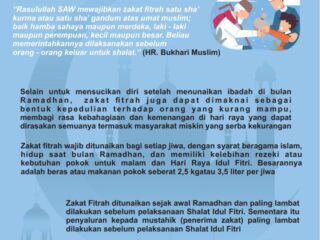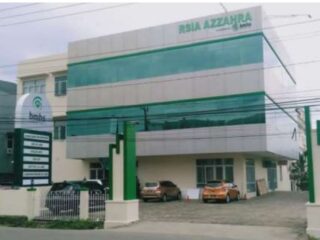Amazon Cloud Server Pricing

Amazon Cloud Server Pricing – Amazon RDS pricing is not as simple as many would like. Below is how much RDS actually costs.
Amazon Relational Database Service (RDS) enables Amazon Web Services (AWS) customers to manage, operate, and scale their databases. A managed service, RDS provides seven database engines and multiple instance sizes and types for working with relational databases. AWS claims that RDS can match the performance, scalability and availability of commercial databases at a tenth of the price. Is this true and how much does Amazon RDS cost? This guide explains how Amazon RDS pricing works. In addition, we will discuss how you can understand, improve and monitor your RDS costs. Table of Contents How Does Amazon RDS Pricing Work? So how much does Amazon RDS cost? Frequently Asked Questions (FAQs) How do you understand and control RDS costs How does Amazon RDS pricing work? The cost of Amazon RDS varies based on several factors, including your choice of database engine, database instance, database region, and purchase type (on-demand or reserved instance). Database instances, outbound data transfer, additional storage, deployment type, and other aspects also affect Amazon RDS costs. But you only pay for the relational database resources you use during the Amazon RDS billing period, including hosting, storage, operations, and data transfer. Amazon RDS pricing works like this based on key factors: 1. Amazon RDS Free Tier You can use up to 750 AWS db.t2.micro, db.t3.micro and db.t4g.micro for free to run MySQL. and PostgreSQL and MariaDB databases in one Availability Zone each month if you want to test the suitability of RDS for your needs. If you’re running multiple instances, Amazon RDS billing automatically aggregates your usage across instance classes. Alternatively, you can use Oracle Bring Your Own License (BYOL) or 750 free hours per month for a single instance of AZ db.t2.micro running SQL Server (using SQL Server Express Edition). Amazon RDS Free Tier also allows you to run a single AZ Oracle BYOL db.t3.micro instance. However, if you run db.t3.micro single-AZ and db.t2.micro single-AZ instances on Oracle BYOL, RDS will aggregate usage across all instance classes. In addition, you get 20 GB of general database storage (SSD), 20 GB of storage for database snapshots (user initiated) and automatic database backups. How do paid tiers work on Amazon RDS? 2. Amazon RDS Pricing by Database Engine Amazon RDS supports seven types of relational database engines: Amazon Aurora (compatible with MySQL), Amazon Aurora (compatible with PostgreSQL), MariaDB, MySQL, PostgreSQL, Oracle, and Microsoft SQL Server. You can also deploy Amazon RDS to outposts (on-premises). Amazon Aurora is a relational database owned by AWS, which offers massive availability. It is compatible with both MySQL and PostgreSQL databases. It also provides tools for developers to build serverless, machine learning-based applications. With custom Aurora, on-demand case selection lets you pay by the hour. There are no long-term commitments. No upfront fees. Choosing reserved instances (committed use for 1 or 3 years) gives you additional savings. Alternatively, by choosing Aurora Serverless you can automatically scale up and down based on your application’s needs and pay only for the capacity you use. Amazon RDS bills Aurora Storage in increments of per GB per month and I/O usage per million requests. No pre-allocation of storage or I/O is required. Both are automatically scaled. Use of functions such as Global Database, Snapshot Export, Backtrack and data transfer from Aurora incur additional costs. MariaDB pricing, MySQL pricing, and PostgreSQL pricing are the same as Amazon RDS. But PostgreSQL instances are expensive, up to 10% per hour depending on size, but all open source databases share the cost of storage, provisioned I/O, and RDS data transfer. For Oracle and Microsoft SQL Server DB pricing, licensing costs can nearly double the cost of open source alternatives. But you can bring your own license (Bring Your Own License) with Oracle, which lowers the hourly cost to match the open source options. Storage and data transfer fees are comparable to those for open source databases. 3. Amazon RDS Pricing by Database Instance After choosing an engine, you can choose RDS instance type and size from Amazon RDS db.t3.micro (has 2 vCPUS, 1 GB RAM, supports 2085 Mbps) to db.m5.24xlarge ( 96 vCPUS, with 384 GB RAM, providing multiple instances of up to 19,000 Mbps). . We have it. Choosing the right RDS instance size for your needs can be challenging. We recommend that you keep track of how much data your requests (your workgroup) use. Then use Advisor (a free cloud resource and price comparison tool) to find, select and write the right DB instance size. What an RDS Advisor looks like: An advisor for choosing Amazon RDS instance type, size, and price. 4. Amazon RDS Pricing by Database Region Amazon region has multiple Availability Zones (AZ), each with its own pricing options and support for fault isolation. Regardless of your choice of database engine, instance type, push option, storage, etc., you should always specify a region, AZ region, or local region to calculate RDS costs. You can also deploy a database instance across multiple Availability Zones (AZs). Here, RDS automatically installs and runs secondary DB instances in a different Availability Zone. The primary DB instance is copied to these secondary DB instances at the different AZs. It provides data redundancy, support for failover, reduces I/O freezing and limits latency spikes during system backups. Secondary DB instances also serve read traffic on multiple AZ database cluster deployments. 5. Pricing for Amazon RDS On-Demand Instance vs. Amazon RDS Reserved Instance Pricing In RDS, On-Demand instance pricing based on database usage hours is the default billing method. You don’t need to make any upfront payments or long-term commitments here. However, if you use an RDS DB for less than an hour, RDS will bill you in 1 second increments with a minimum charge of 10 minutes each time the billable status changes when a DB instance class is created, started or modified. RDS bills these events in 1 second increments from start to stop. Amazon RDS On-Demand instance pricing by location, instance size, and a single availability zone. For an added boost, you can start an instance on demand, stop it, or resize it whenever you want. Reserved Amazon RDS Instances allow you to reserve an instance for one or three years. With a long-term commitment, you get a significant discount on the tailor-made price. There are three payment options for RDS Reserved: No Upfront ($0 upfront for a 29% savings on request), Partial Upfront (pay up to 99% upfront for a 33% savings on a one-year plan and 52% for three years), and Upfront in in its entirety (savings 34% in one year). Or up to 53% full down payment for three years). Here is a quick example of RDS Reserved Instance pricing for different DB instance sizes, for one year in US East (Ohio): 6. Amazon RDS Pricing RDS has three types of storage available through DB Storage, which determine how much you pay monthly . We will provide General Purpose Storage (SSD) You will have access to 20GB and 64TB General Purpose Storage (SSD) for your important data sets. You pay not only for the I/O you use, but for the storage space you provide. This option charges $0.115 per GB per month. Provisioned IOPS storage (SSD) You can provision I/O capacity to meet specific database requirements. You will be able to deliver and scale capacity from 1,000 IOPS to 80,000 IOPS and 100 GiB to 64 TiB. Storage costs $0.125 per GB per month. The estimated IOPS cost is $0.10 per month IOPS. Magnetic storage Here you can choose magnetic storage options from 20 GB to 3 TB for your basic data set. RDS supports backward compatibility for this storage option. Magnetic storage costs $0.10 per GB per month. Pays $0.10 per million requests for I/O. 7. Additional Cost Factors for Amazon RDS Amazon RDS requires additional fees for backups, snapshot exports, and data transfers. Pricing for RDS backup storage starts at $0.095 per GB per month. The cost remains the same even after the database instance is terminated. Pricing for exporting a snapshot to RDS starts at $0.010 per GB of snapshot size. Note that this function exports data from Amazon RDS or Aurora snapshots to Amazon S3 in parquet format. In Amazon S3, this format unpacks 2 times faster and requires 6 times less space than the text format. RDS data transfer rates only apply to outgoing RDS to Internet – not Internet to incoming RDS. Pricing is tiered and starts at $0.09 per GB for the first 10 TB per month. In all AWS and AZ regions, except GovCloud and China, data transfer to the Internet is free for 100 GB per month. But this offer is global, so it won’t apply to AWS regions separately or individually. So how much does Amazon RDS cost? there
Amazon Cloud Server Pricing









No Comments